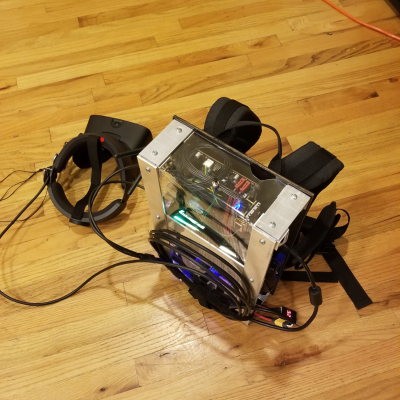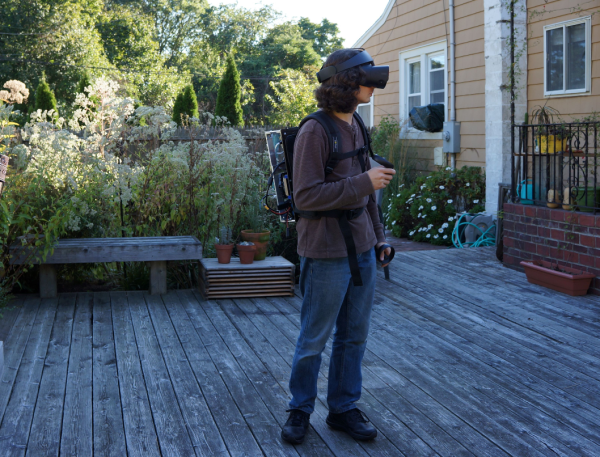Persistence is what a hacker needs to make it to their goal. That’s exactly what it took for [Erik] to make an untethered VR backpack system.
Starting way back in the Spring of 2019, [Erik] began working on an untethered VR system. Sure, the Oculus Quest was coming out, but it wouldn’t be compatible with the game library of PC based systems. [Erik] decided he wanted the best of both worlds, so he decided to build a backpack that carries a computer powerful enough to drive the Rift S.
The initial system was to use a cut-up backpack, an HP mini PC with an external Nvidia 1060 GPU, and a basic DC-DC converter. The result? Just about nothing worked. The HP’s boot process didn’t play well with an external GPU.
[Erik] went through several iterations of this project. He switched over to a standard PC motherboard and tried a few different DC-DC converters. He settled on a device from HDPLEX rated at 200 watts continuous. The converter plugs directly into a standard 24-pin ATX motherboard power connector and isn’t much larger than the connector itself.
 The old backpack with its added padding and wood frame gave way to a Zotac VR go backpack. Only the straps and frame of the Zotac are used, with [Erik’s] custom parts mounted using plywood and 3D printed parts. The outer frame is aluminum, with acrylic panels.
The old backpack with its added padding and wood frame gave way to a Zotac VR go backpack. Only the straps and frame of the Zotac are used, with [Erik’s] custom parts mounted using plywood and 3D printed parts. The outer frame is aluminum, with acrylic panels.
Power comes from 7000 mAH LiFe batteries, with each pack providing an hour of runtime. The Backpack can hold two packs though, so wiring them up in parallel should double that runtime.
We have to say this is an extremely well-documented build. [Erik] explains how he chose each component and the advantages (and pitfalls) of the choices he made. An example would be the RAM he picked. He chose DDR4 with a higher spec than he needed, just so he could undervolt the parts for longer run-times.
Not everything in VR is fun and games though – you can ditch that monitor and go with a VR desktop.











